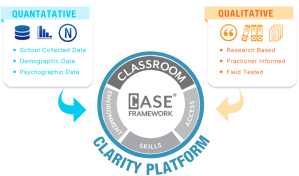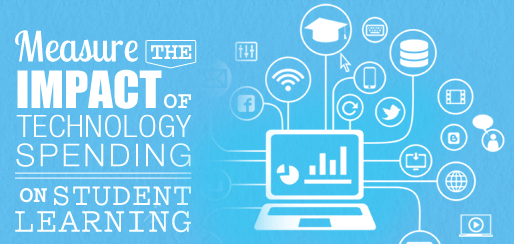BrightBytes has been on a mission to “improve the way the world learns through data” — and, in turn, to help schools solve their technological woes. To do that, the San Francisco-based learning analytics startup provides schools with the tools and services they need to be able to more effectively measure the impact of technology on the learning process.
The company’s first product, Clarity, is a SaaS data analytics platform for K-12 schools, which the startup offers on a one-year subscription basis, to be renewed annually. Clarity measures the efficiency of tools in use in the classroom and the impact those tools have on student achievement, while providing easy-to-use roadmaps to address shortcomings. In the first six months of sales, BrightBytes co-founder Rob Mancabelli tells us, more than 2,000 schools in over 20 states joined the platform, and the startup is on track to have 5,000 schools by the end of the summer.
To support this growth, BrightBytes recently secured its first financing in a $750K seed round led by Learn Capital. NewSchools Venture Fund and an unnamed “strategic investor in the education sector” also participated in the round.
Thanks to the rise of social networking, the growing ubiquity of mobile devices and the cloud, and the fundamental maturation of the web as a distribution channel (among other things), the opportunities for learning look far different than they did five years ago. However, teaching itself remains remarkably unchanged. Educators still teach the same way they did when we were in school — when our parents were in school.
Students today grow up with mobile phones, with Facebook, the web and laptops. With the rate of technological change accelerating (and our behaviors slowly adapting to that change), it’s imperative that educators begin teaching not to precedents but to the way students actually learn. Today. Schools, educators and administrators understand the importance of integrating technology into the classroom, but as the number of EdTech startups, tools and platforms increases, it can be tough for educators to find the signal from the noise and identify which technologies are having the biggest impact on what’s most important: Teacher performance and student outcomes.
In the EdTech sector, where schools are traversing relatively new ground, experience in education is critical to winning over teachers and administrators and gaining the trust of both schools and investors. Part of the interest in BrightBytes stems from the fact that Mancabelli has worked in and around the education industry for more than 15 years (at both private and public levels) and even published a book about how schools can better prepare their students in the midst of technological change.
 Mancabelli also sits on the “educational boards” at companies like Acer and Dell, advising companies on how to best interface with educators. His co-founder, Hisham Anwar, was the director of global technology operations at Zynga before leaving for BrightBytes and already has two startup exits under his belt.
Mancabelli also sits on the “educational boards” at companies like Acer and Dell, advising companies on how to best interface with educators. His co-founder, Hisham Anwar, was the director of global technology operations at Zynga before leaving for BrightBytes and already has two startup exits under his belt.
The co-founders have since assembled a team of data scientists, statisticians and educators, who have helped create a platform that aims to capture and give a more granular look into the relationship between technology use and student achievement. To do that, its team of researchers analyzes research papers, publications, reports, case studies and best practices from schools all over the country to identify what’s working and what isn’t. It then combines these qualitative factors with quantitative data from the school in question (in tandem with data from third-party sources) in a customized dashboard for easy consumption.
The startup also creates reports for individual schools, offering recommendations on how schools can improve their use of technology as well as decision support and other business intelligence-style services. Basically, that means that BrightBytes’ own technology takes a look at the cross section of demographics at play in each individual school, identifies the problem areas (What?! No iPads?!) and lays out exactly how the school can go about (affordably) closing that gap.
There are plenty of startups already out there offering quality, realtime analytics help to schools and educators (like Ontract, to cite one example. But few if any offer the kind of comprehensive comprehensive comparison between an individual school and key performance indicators at district, state and national levels.
Combining internal data with external data allows BrightBytes (presumably) to provide a much more nuanced look at where schools are dropping the ball and, as a consequence, more valuable intelligence and recommendations on just what to do about it. Because, after all, you can only tell a school so many times that it needs to “get with it” and “start living in the modern era” … in practice, that means nothing. Just another hollow directive. But actually showing the efficacy of adaptive learning tools on student outcomes and showing them how to prevent their school from having the lowest test scores in the district? That’s money in the bank — and technology actually improving education, rather than just confusing it.
For more on BrightBytes’ approach to Clarity, find it here.
